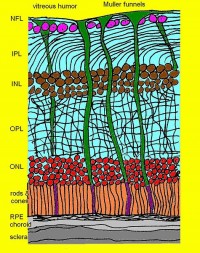Research shows that remembering a bad deed we did will affect us and make us perceive the room as dark, and vice versa. The explanations in the article
Dr. Miriam Dishon-Berkowitz Galileo

The concept of "light" is identified in many cultures with the concept of "good", while the concept of "darkness" is identified in them with the concept of "evil" or the absence of morality. A study of our sources reveals that already in the first verses of the Bible, light is identified with goodness (Genesis XNUMX:XNUMX-XNUMX): "And God said, Let there be light, and let there be light. And God saw the light because it was good."
In the book of Isaiah, in several places, the prophet draws a parallel between light and good (and peace) and between darkness and evil: "Woe to those who say to evil good and to good evil, the heavens are darkness for light, and light for the darkness of the heavens are bitter for sweet and sweet for bitter" (Isaiah XNUMX:XNUMX); And "I am the Lord and there is no other. Creator of light and creator of darkness, maker of peace and creator of evil; I, the Lord, do all these" (Isaiah XNUMX:XNUMX). Literature and general culture are also loaded with images that materialize light for good and darkness for evil.
Athletes who wore black were seen as bad
Psychological studies give empirical support to the metaphor that likens good to light, and darkness (or black) to evil. It was found, for example, that sports players who wore black clothes were perceived by the spectators as worse than players who wore clothes of other colors.
Research in a related field is conducted within a subfield in the study of cognition that deals with the investigation of the concept of "embodied cognition". The premise of this concept is that there are interrelationships between cognition and the way the body perceives the environment.
In one of the studies, for example, subjects were asked to recall a situation in which they felt socially rejected, and then to state what they thought the temperature was in the room where they were staying. It should be noted that "rejection" is an abstract concept, while temperature is a concrete sensory experience. From the findings of the study it became clear that subjects who remembered the experience of rejection reported that they felt that the temperature in the room was lower than reported subjects who did not feel rejection.
Memory and perception of light brightness
And here, in a study published in the journal Psychological Science, Pronobesh Banerjee, Promothesh Chatterjee and Jayati Sinha examine whether recalling a bad and immoral act - compared to recalling a good and moral act - will affect The way people will perceive the brightness of the light in the room.
40 subjects participated in the first experiment. Half of them were asked to recall an instance in which they behaved morally and to describe it in detail. The other half of the subjects were asked to describe an event in which they behaved immorally. In the second phase of the experiment, the subjects were asked to complete some distracting tasks and then evaluate the brightness of the light in the room.
From the analysis of the results of the experiment, it became clear that subjects who recalled the case in which they committed an immoral act estimated that the room was darker than the way the subjects in the group who were asked to recall the case in which they behaved morally estimated.
74 participants participated in the second experiment. Also in this experiment, one group of subjects was asked to recall a case in which they behaved morally, while the other group was asked to recall a case in which they behaved in an immoral manner. In the second phase of the experiment, the subjects were asked to rate their preference for objects that emit or do not emit light (for example, a lamp or a mug). Finally, as in the first experiment, the subjects were asked to estimate the level of light brightness in the room.
In this experiment, results similar to those of the first experiment were obtained: subjects who remembered an immoral act they had committed estimated that the room was darker. In addition, they showed a greater preference for light-emitting objects (lamp, candle, etc.). The explanation offered by the researchers for this is that remembering the immoral act they committed caused feelings of guilt in the subjects. Therefore, they preferred objects that might reduce the darkness in the room and thus reduce the negative emotions associated with darkness.
In conclusion, the two experiments show that recalling moral or immoral behavior affects concrete perception. A possible explanation for the results is that the brain similarly maps concrete experiences and their metaphorical representations. Thus, the activation of one factor (for example, the experience of light perception) leads to the activation of the other factor (the abstract concept "good"). This raises an interesting question for further research: will people who are in an environment where the lighting is brighter behave more morally?
Dr. Miriam Dishon-Berkowitz is a psychologist, organizational and marketing consultant and lecturer at the Ono Academic College.
The full article was published in Galileo magazine, June 2012

3 תגובות
That's why anti-Semitism, that's why the Holocaust. Because of the black!
that the ultra-Orthodox wear jeans and a colored shirt.
During my personal mourning period I saw dark…
And I also felt guilty and I am not a religious person at all.
The fear of the dark and the unknown is universal...
Bad weather also affects our mood
Mourning is associated with the color black, but for example in Japan the color of mourning is white. Have the researchers tested the psychological relationship described in the article regarding other cultures.